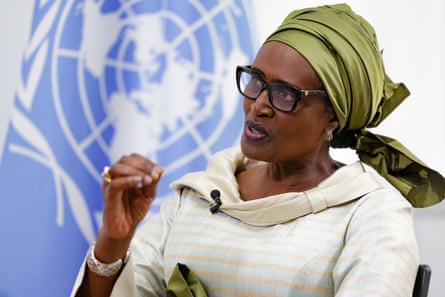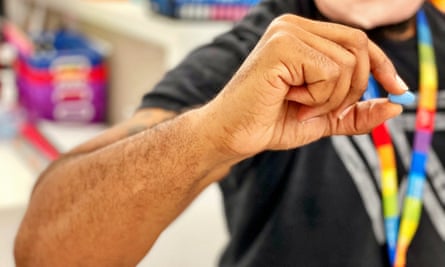The majority of new HIV infections last year occurred in countries outside sub-Saharan Africa for the first time.
African countries have made swift progress in tackling the virus, with the number of infections in sub-Saharan Africa 56% lower than in 2010, a new report from UNAids said. Globally, infections have fallen by 39% over the same period.
“For the first time in the history of the HIV pandemic, more new infections are occurring outside sub-Saharan Africa than in sub-Saharan Africa. This reflects both the prevention achievements in much of sub-Saharan Africa and the lack of comparable progress in the rest of the world,” said the report, which found case numbers were rising in eastern Europe and central Asia, Latin America, the Middle East and north Africa.
UNAids said the world is “at a crossroads” in efforts to tackle the virus, with action this year key to success.

A backlash against human rights in many countries is making it harder for marginalised groups to access care, said Winnie Byanyima, executive director of UNAids.
At the same time, services face funding shortfalls after cuts in aid, and with many low-income countries “choking on debt”, that reduces domestic health spending, she said.
There is also a risk that gamechanging new drugs that need only to be taken every few months to treat or prevent HIV will only be available in richer countries.
Almost 10 years ago, global leaders agreed to end Aids as a public health threat by 2030 in the UN sustainable development goals.
“The world is not on track to succeed,” said Byanyima. “The world can end Aids by 2030 but that will depend on the actions of leaders, both government and corporate leaders, the actions they take today.”
In 2023, 39.9 million people across the world were living with HIV, according to a new report from UNAids launched on Monday at the 25th international Aids conference in Munich, Germany.
There were 1.3 million new HIV infections and 630,000 Aids-related deaths, including 76,000 children.
Dr Sharon Lewin, president of the International Aids Society, said the data showed that countries that commit to managing their epidemics “even in the poorest parts of the world, can indeed lower HIV infections”.
“That is very exciting and inspiring,” she said. “The flipside of that, is that the infections outside sub-Saharan Africa might be more challenging to get on top of.”
Lewin said infections were focused in marginalised groups, including people who inject drugs, sex workers, transgender women or gay men, who faced discriminatory and punitive laws. “This is not a biomedical issue. It’s a societal issue and that’s a bigger challenge.”
Byanyima said it was vital to “protect the human rights of everybody”, citing evidence that rates of HIV among gay men are lower where homosexuality is decriminalised. With new criminalisation laws, such as in Uganda, “we have to work hard to keep the progress”, she said.
“This backlash on rights, this backlash against democracy, against the rights of women, against LGBTQ rights, is pushing people away from the services that they have a right to.
“We need to have further progress on decriminalisation, particularly in Africa, and we need to fight stigma and discrimination against people living with HIV and people at risk.”
Young women in sub-Saharan Africa remain particularly vulnerable, Byanyima said. She called for policies to reduce the inequalities they face, including universal and free secondary education.
In eastern Europe and central Asia, and the Middle East and north Africa, just 50% of people living with HIV are taking antiretroviral drugs that suppress the virus and reduce the risk of passing it on.
Sub-Saharan Africa remains home to almost half of people living with HIV who have no treatment. Access is especially low among children, the report warned.
Byanyima said it was urgent that “gamechanging technology” such as long-acting drugs to treat or prevent HIV, already available in places such as the US, be shared immediately with developing countries.

“If it’s going to take another six years, 10 years, before prices come down for those countries, then we won’t end Aids,” she said. “But if we can move quickly to put that technology in the medicines patent pool and have generics making it in a few years time, we could get there.”
She also called for “a solution to the debt crisis, a restructuring of debt to free up resources, but also boosting aid”.
The report said resources were at their lowest level in more than a decade.
Source: theguardian.com


